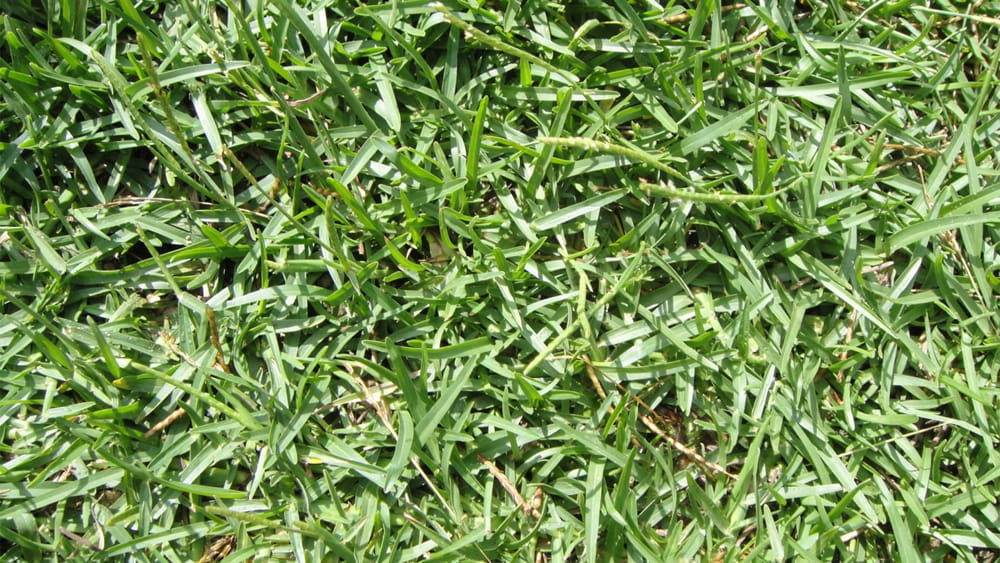A large green lawn in front of the porch is one of the things that many people love. A scene with yellow grass and flowers will make your home beautiful and create a romantic space to sit and chat and relax every day.
However, you may have a hard time growing grass in front of your house if you only have a patch of sand.
As you know, sand drains too easily and does not hold moisture, or nutrients, and heats up with temperature, so very few types of grass can survive on the sand.
However, centipede grass will be an ideal choice to fulfill this wish of yours. Will centipede grass grow in sand? The answer is yes but you also need a care plan to help centipede grass grow best in the sand.
Will Centipede Grass Grow In Sand?
Centipede grass can completely live in the sand and form a green lawn in front of your house if you have a proper care plan for them.
Sandy soil has too many minerals and not enough plant organic matter, so it is not an ideal environment for growing grass or other crops.

So before planting any grass, you also need to improve the soil because even if you plant the right type of grass, it will be difficult for them to reproduce and grow.
The sandy soil lacks organic matter to help the weeds get nutrients, retain moisture, and provide root adhesion, so you need to add about 6 inches of organic matter to create the most favorable conditions for centipede grass to grow. develop.
Centipede grass also needs a pH of around 5.5, so if the pH is too high, you can use sulfur or a sulfur-based fertilizer to lower the pH and use lime to raise the pH if it’s too low.
Are There Centipedes That Can Be Grown By Seeds?
Centipede grass can be grown by seed, so you can mix the seeds with sandy soil, and incubate in a shaded area, when the centipede’s seeds have germinated, you proceed to plant the seeds in the sand.
You should mix 1 pound of seeds with 3 gallons of sand for effective and easy seeding in large areas.
Centipede grass takes a long time to germinate, which can take up to 30 days under favorable conditions such as warm weather and suitable humidity. The time it takes for centipedes to germinate will depend on weather conditions and how often you water them.
For three weeks in a row, you have to water continuously and often because the sand will drain very quickly while the young plants need a lot of water to stimulate growth.
How To Fertilize Centipede Grass?
You need to fertilize to create a nutrient-rich environment to help young plants quickly absorb nutrients and grow. Centipede grass will not grow well if the fertilizer content is too high.
If you fertilize with too high a nitrogen content, it will make the centipede grass susceptible to pests and diseases, too much phosphorus will deplete the iron content in the sand, which will also inhibit the growth of the centipede.
You should use a phosphorus-free fertilizer like 15-0-15, with only about 2 pounds of nitrogen per 1000 square feet. Nitrogen and phosphorus levels need to be controlled for centipede grass growth, especially during the new centipede growth stage.
For the centipede grass to grow thicker and faster, you need to add nitrogen fertilizer once a year to enhance the nutrients for the sand and help the centipede grass grow quickly.
You should only apply nitrogen fertilizer once a year instead of many times because centipede grass cannot absorb too many nutrients in the sand. According to gardening experts, you should fertilize in late spring when the centipede grass has matured.
When To Have A Green Centipede Lawn?
Centipede grasses when mature will have a very rapid growth rate so they can overwhelm and eliminate other grasses when planted together.
However, you can combine planting centipede grass with Bermuda grass to avoid pests and stimulate the growth of centipedes.
Once the centipedes have formed, you need to prune them when they reach 1 to 1.5 inches in height. However, the time to having a green centipede lawn also takes time.
Centipede grasses will grow slowly for the first 1 to 2 years as their roots must remain stable and deep in the sand. Centipede grass will grow rapidly when in the 3rd year when everything has been stabilized from the nutrients, moisture, fertility, and vitality of each centipede plant.
Centipede grass can also be grown on sand covered with a layer of rock, it is important that you provide enough water and retain moisture in the sand and rocks so that the centipede grass can absorb water and nutrients.
Read more: Can You Mix Zoysia And Centipede? Important Things You Should Know
Conclusion
Sand is not an ideal medium for growing grasses, plants, or flowers because it drains too quickly, does not hold moisture and nutrients, and increases in temperature with the weather.
However, centipede grass will still be an ideal choice for you to grow in the sand if you meet some basic conditions such as regular soil improvement, constant watering, testing for moisture in the sand, fertilizing, and providing nutrients each year, pruning regularly and do not step on them.
Centipede grass also needs a long time before it reaches a rapid growth rate. Usually, you need to define this period as 3 years, so you need to have a specific plan if you want to plant a green centipede lawn in front of the house.